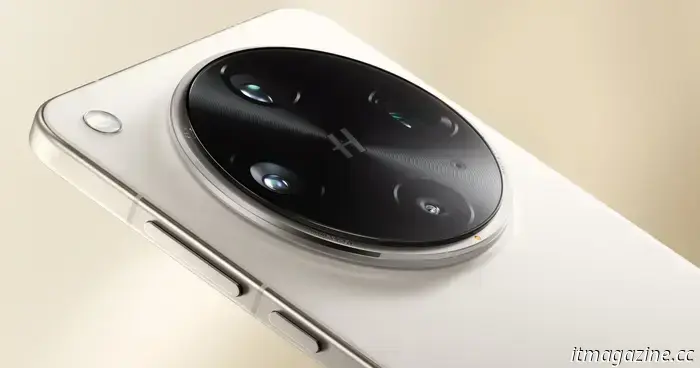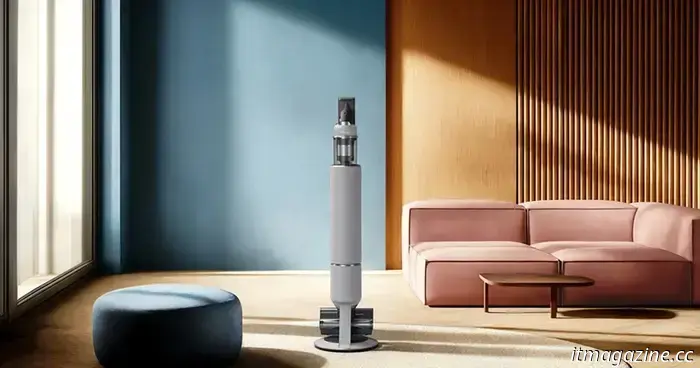
The Oppo Find X8 Ultra is the camera flagship I wish I could purchase.
Oppo has recently launched what can be considered one of the most powerful smartphones available, particularly for those who prioritize camera quality. The Find X8 Ultra is equipped with five imaging sensors on the rear, which include two high-resolution zoom cameras featuring a folded lens design.
The new Oppo model maintains a design consistent with other devices in the Find X8 series but enhances its photography and videography capabilities. At the forefront is a 50-megapixel primary camera with a significant 1-inch sensor, a rarity in smartphones.
For long-distance shots, it boasts a 50-megapixel periscope camera that offers 3x optical zoom, utilizing an in-house "Super Blue Glass" element to minimize ghosting and glare. Additionally, the 50-megapixel ultra-wide camera enables macro photography, allowing users to focus on subjects as close as 10cm without difficulty.
Oppo has also included a secondary zoom camera in the Find X8 Ultra. This camera utilizes a triple-prism light reflection system for 6x optical zoom, featuring a 50-megapixel Sony LYT-600 sensor. There's also a dedicated True Chroma Camera for spectral data capture, which enhances temperature and white balance control in images.
All four camera sensors are capable of taking 25-megapixel high-resolution shots, balancing pixel-binning and raw detail retention. The camera system has been fine-tuned by Hasselblad, providing custom lens modes for vintage and cinematic photography. Similar to the iPhone 16 Pro, the Find X8 Ultra can record 4K videos at 120fps.
Despite its slim profile of only 8.78mm, housing a large camera module, the device provides IP69-level dust and water resistance, the best available among mainstream smartphones. The front features a 6.82-inch QHD OLED display, while a robust 6,100 mAh battery supports both 100W wired and 50W wireless charging.
The phone is driven by Qualcomm's top-tier Snapdragon 8 Elite SoC, paired with 16GB of RAM and up to 1TB of fast UFS 4.1 storage. Additionally, Oppo has launched a smaller flagship model, the Find X8s, which features a triple 50-megapixel rear camera setup, MediaTek's new Dimensity 9400+ SoC, and a sizable 5,700 mAh battery.
Regrettably, these devices may not be available in the US market, and importing them from overseas retailers is likely your best option. Please be aware that increased tariffs and the termination of a de minimis exemption might result in significant charges prior to the package arriving at your home.
Nadeem is a tech and science journalist who developed an interest in innovative smartphone technology out of curiosity and subsequently began…
I compared two of the most powerful mobile chipsets — here’s what happened
If you're considering purchasing an Android flagship smartphone within the next year, it will likely be powered by one of two new processors. Historically, it was almost a given that the latest Qualcomm Snapdragon processor would be inside many of these devices. While this remains true for numerous phones, an increasing number of manufacturers are turning to MediaTek's leading competitor.
MediaTek unveiled its latest chipset a few months ago, and shortly thereafter, the first phone powered by it— the Oppo Find X8 Pro, which I reviewed— was released. The initial smartphone utilizing the Qualcomm Snapdragon 8 Elite, the Realme GT7 Pro, also launched almost immediately. But how do these two chipsets stack up against each other?
2024 was the year of small flagship phones
We’ve seen attempts by companies to create compact phones before, but they often failed to gain lasting popularity. Apple launched smaller iPhones with the iPhone 12 mini and iPhone 13 mini, but like most petite phones, they suffered from poor battery life and achieved lackluster sales, despite their highly appreciated pocket-friendly size.
However, 2024 redefined the concept of "small" in flagship phones. This year, compact devices finally gained ground, rather than being overshadowed by their larger counterparts, though there remains one crucial aspect yet to be addressed: the emergence of true small Pro flagships.
Can this Android phone camera beat the iPhone 16 Pro? I flew to Bali to find out
The iPhone 16 Pro boasts one of the finest smartphone cameras on the market, establishing a benchmark for others, particularly in video quality. We've already seen Samsung and OnePlus attempt to surpass Apple with little success, and the Google Pixel 9 Pro has also demonstrated it may fall short.
What happens when you look beyond the U.S.? Smartphones from companies like Xiaomi, Vivo, and Oppo have set camera standards that even the best U.S. models struggle to match. Last month, I was in Bali testing the camera of the iPhone 16 Pro against a new smartphone from Oppo.







Other articles
 Sony's ULT Power Sound lineup introduces three new Bluetooth speakers with powerful bass.
Today, Sony revealed three new Bluetooth speakers as part of its ULT Power Sound lineup: the Field 3, Field 5, and Tower 9 party speaker.
Sony's ULT Power Sound lineup introduces three new Bluetooth speakers with powerful bass.
Today, Sony revealed three new Bluetooth speakers as part of its ULT Power Sound lineup: the Field 3, Field 5, and Tower 9 party speaker.
 AMD's Ryzen 8000HX processors are now available in laptops, though you may not notice a significant difference.
AMD has recently introduced several new processors for laptops, which will be launched alongside some of the top graphics cards.
AMD's Ryzen 8000HX processors are now available in laptops, though you may not notice a significant difference.
AMD has recently introduced several new processors for laptops, which will be launched alongside some of the top graphics cards.
 NYT Crossword: solutions for Thursday, April 10
The crossword puzzle in The New York Times can be challenging, even if it's not the Sunday edition! If you're facing difficulties, we're available to assist you with today’s clues and solutions.
NYT Crossword: solutions for Thursday, April 10
The crossword puzzle in The New York Times can be challenging, even if it's not the Sunday edition! If you're facing difficulties, we're available to assist you with today’s clues and solutions.
 Samsung's latest 'Lite' cordless vacuum offers power comparable to Dyson and features intelligent AI capabilities.
Samsung has introduced a new 'Lite' cordless vacuum that matches the power of Dyson's high-end model.
Samsung's latest 'Lite' cordless vacuum offers power comparable to Dyson and features intelligent AI capabilities.
Samsung has introduced a new 'Lite' cordless vacuum that matches the power of Dyson's high-end model.
 Three action films on Netflix you should check out in April 2025.
Three action films on Netflix that you should check out in April feature a classic by Michael Mann, a sequel about a heist, and a thriller centered on survival.
Three action films on Netflix you should check out in April 2025.
Three action films on Netflix that you should check out in April feature a classic by Michael Mann, a sequel about a heist, and a thriller centered on survival.
 Samsung's The Frame Pro eliminates cables to transform your TV into a piece of art.
Samsung has revealed the specifications of its latest The Frame Pro TVs.
Samsung's The Frame Pro eliminates cables to transform your TV into a piece of art.
Samsung has revealed the specifications of its latest The Frame Pro TVs.
The Oppo Find X8 Ultra is the camera flagship I wish I could purchase.
The Oppo Find X8 Ultra features four 50-megapixel cameras, a large battery that supports 100W charging, and a top-tier Qualcomm processor, all housed in an elegant design.
